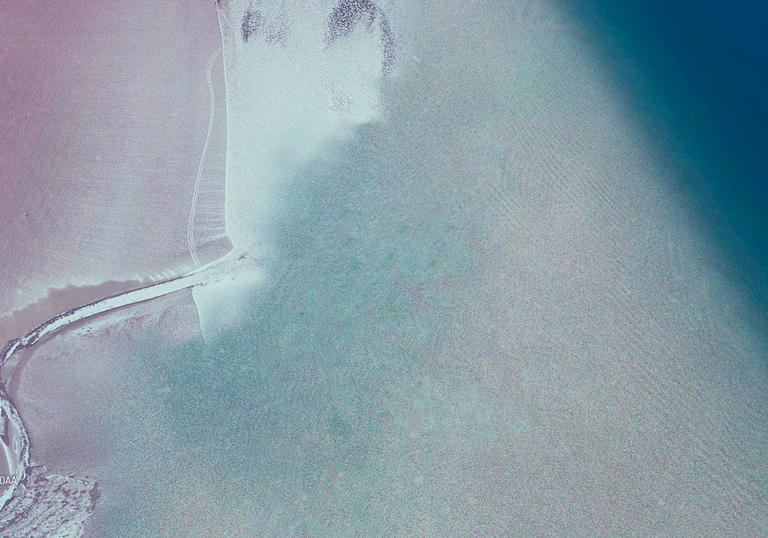How did Insulae [Of the Island] come about?
I was initially invited to submit a proposal for a video installation to be specifically created for Level G - it was to be a joint commission between the Barbican, Lumen Arts Projects and Sky Arts 50 - and the theme was British identity in the age of Brexit. I wasn't actually sure whether I wanted to apply initially - the brief seemed quite a departure from my typical creative obsessions which tend to focus around network infrastructures and machine gaze. But after the briefing meeting I spent some time in the Barbican just staring at that big wall in Level G where the video was to be projected and absorbing the atmosphere of the environment. I remember it was hot and dry and I was thirsty. I started to idly daydream about water streaming down the concrete walls. I went away and deliberately didn't consciously think about the brief for a couple of weeks.
But in the back of my mind a number of ideas began to converge:
- my streaming water Barbican daydream
- the fact that I had been reading Tim Marshall's Prisoners of Geography where he talks fascinatingly about the political importance of sea borders
- a lucky mistake I had made previously while playing with Google Earth where I accidentally generated a virtual journey over empty sea and found it strange and beautiful
I think I woke up with the fully formed idea of INSULAE in my head one morning - then I had to rapidly work out and test whether it could actually be achieved.
Can you discuss the logistics of such a project?
INSULAE was an extremely process-driven piece of work and quite labour-intensive. When I embarked on it there were a whole load of technical unknowns, and questions to be answered before the making of the film could actually begin. The process I evolved was actually a form of drawing. Using Google Earth I drew a long composite line that went right around the British coastline - close to the shore but never quite reaching it. I then set a virtual camera to journey along this drawn line a section at a time, generating footage as it went. All this footage was then brought into post-production to create the finished 6 hour film.
I wanted to create something with a low level of visual incident - something where nothing much happens for large periods of time and the viewer is just waiting
Can you briefly discuss your ideas of separation in relation to island geography?
The word 'insular' literally comes from the Latin word for island 'insula' hence my titling the work INSULAE (Of the Island). When you have shared physical borders with another country it's much harder not to acknowledge your shared cultural heritage and your interdependence.

